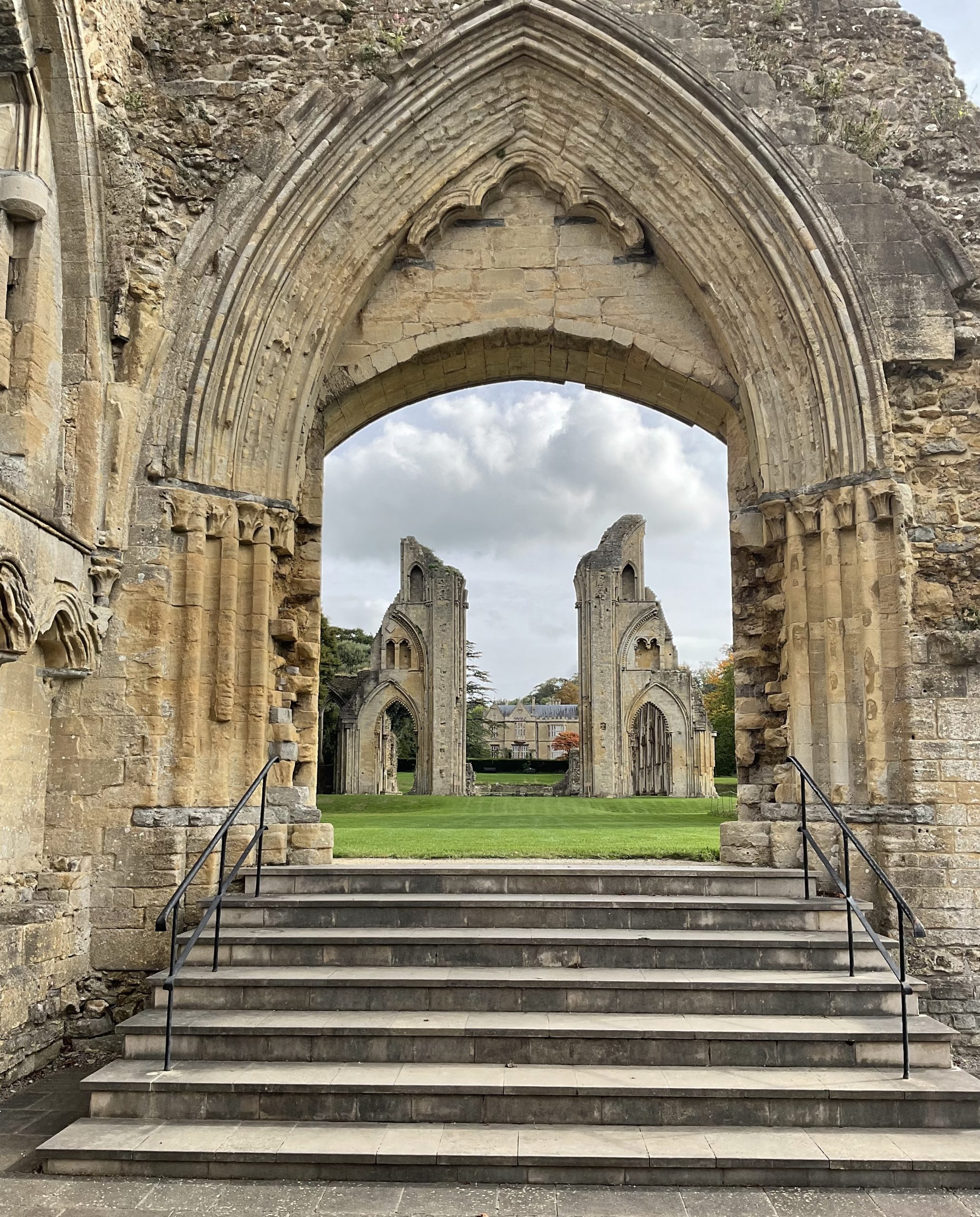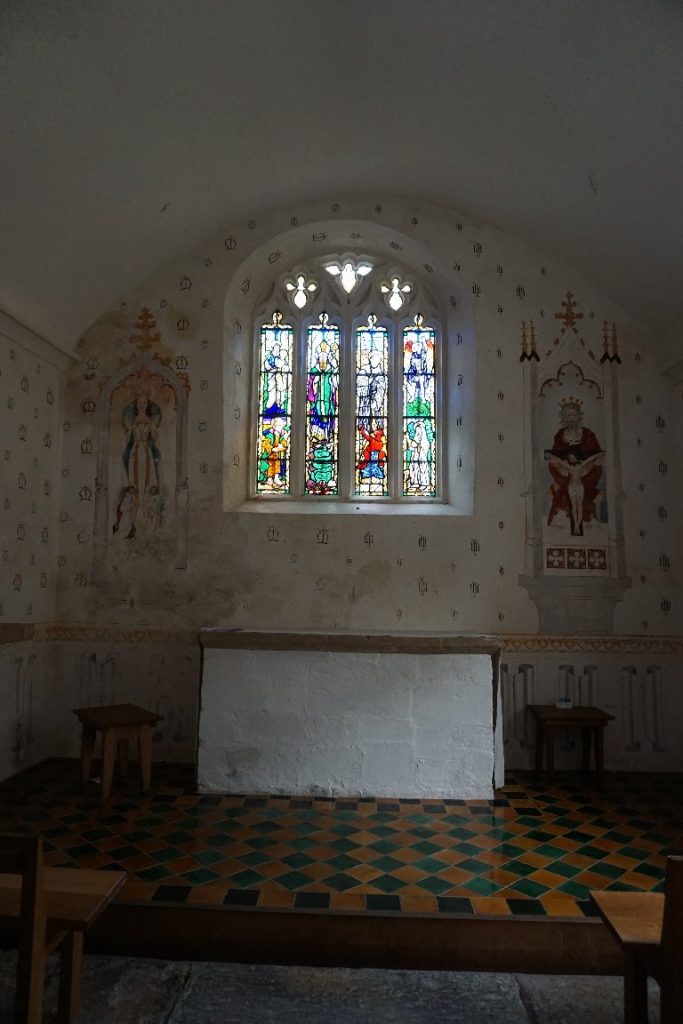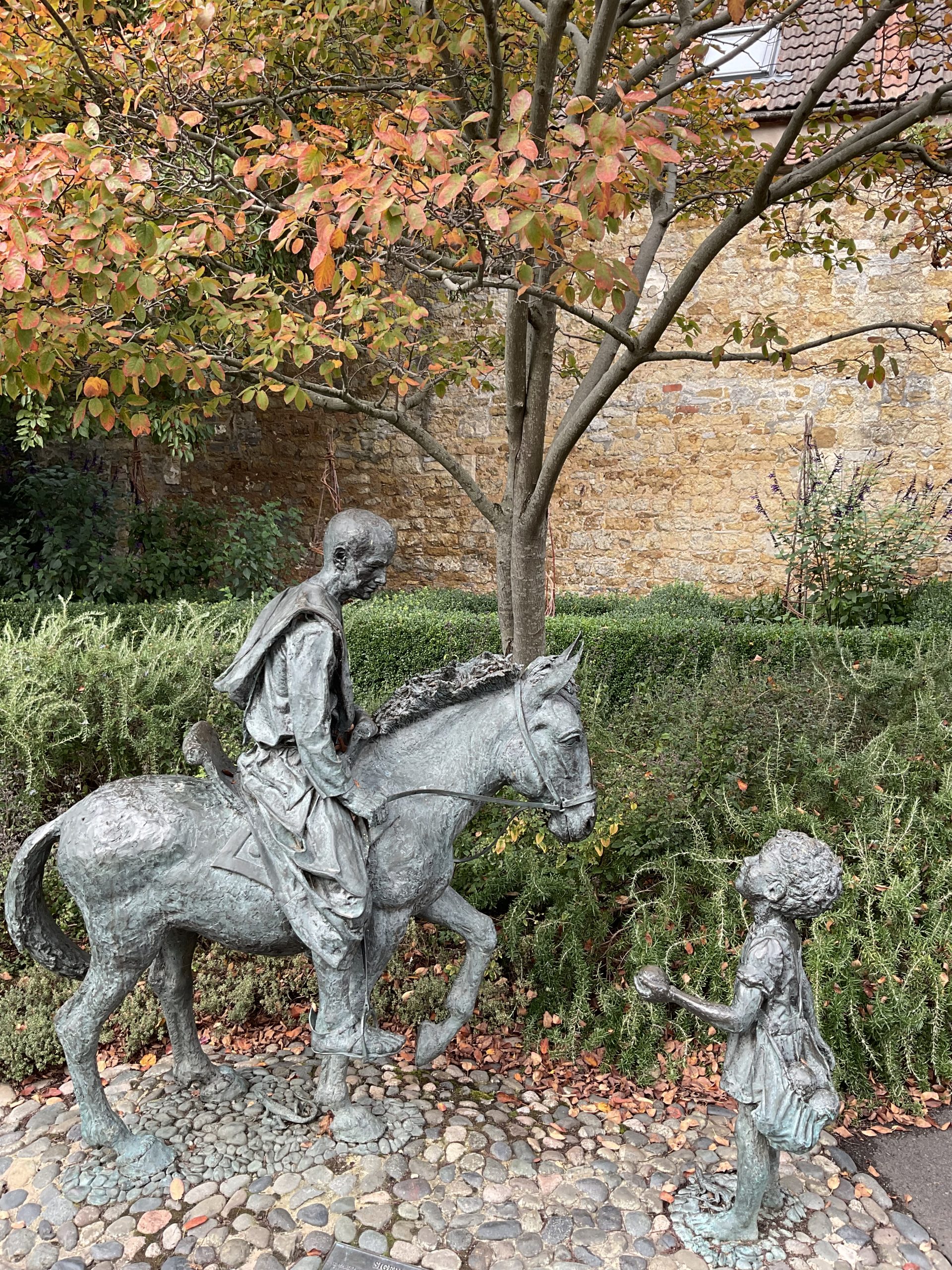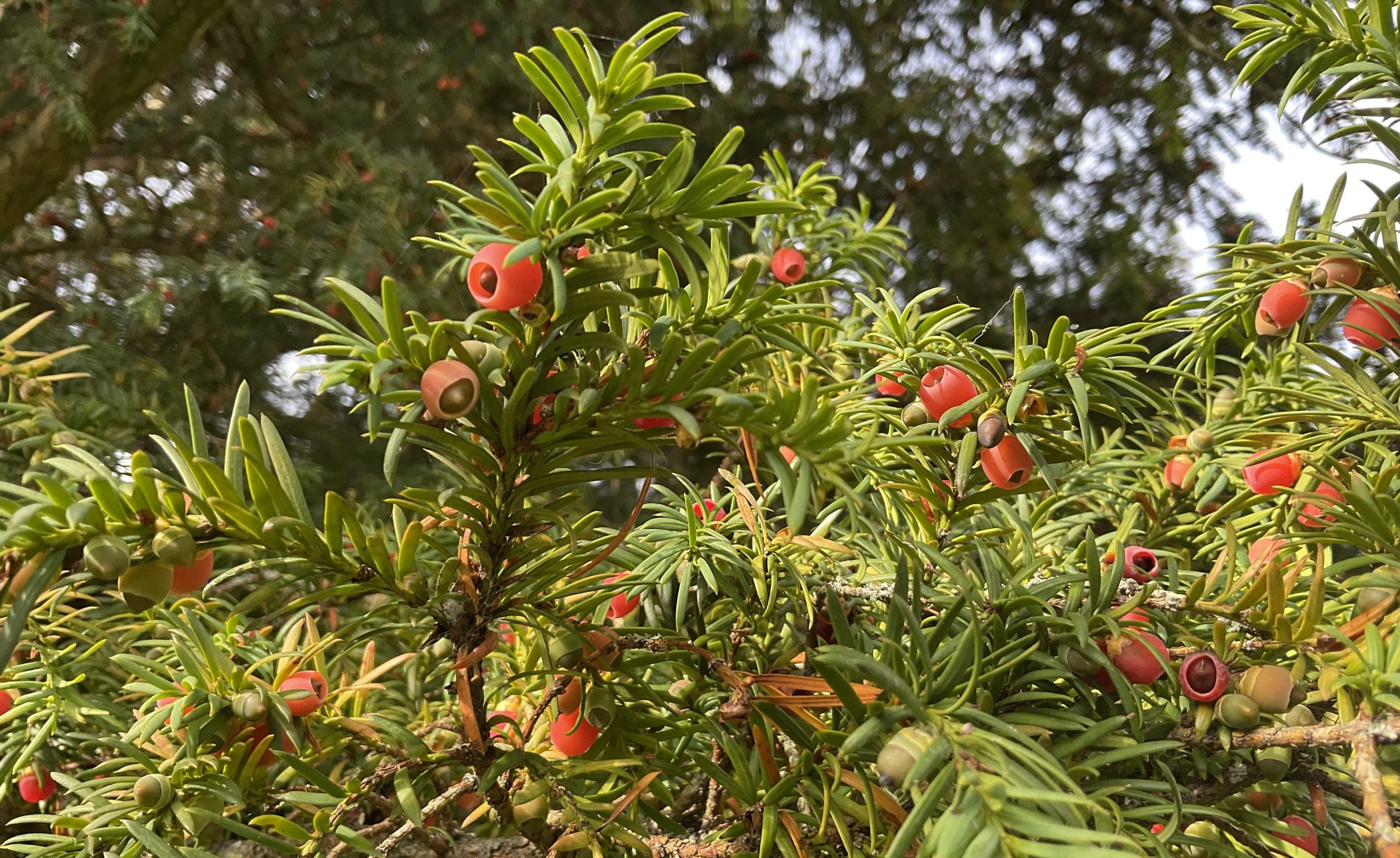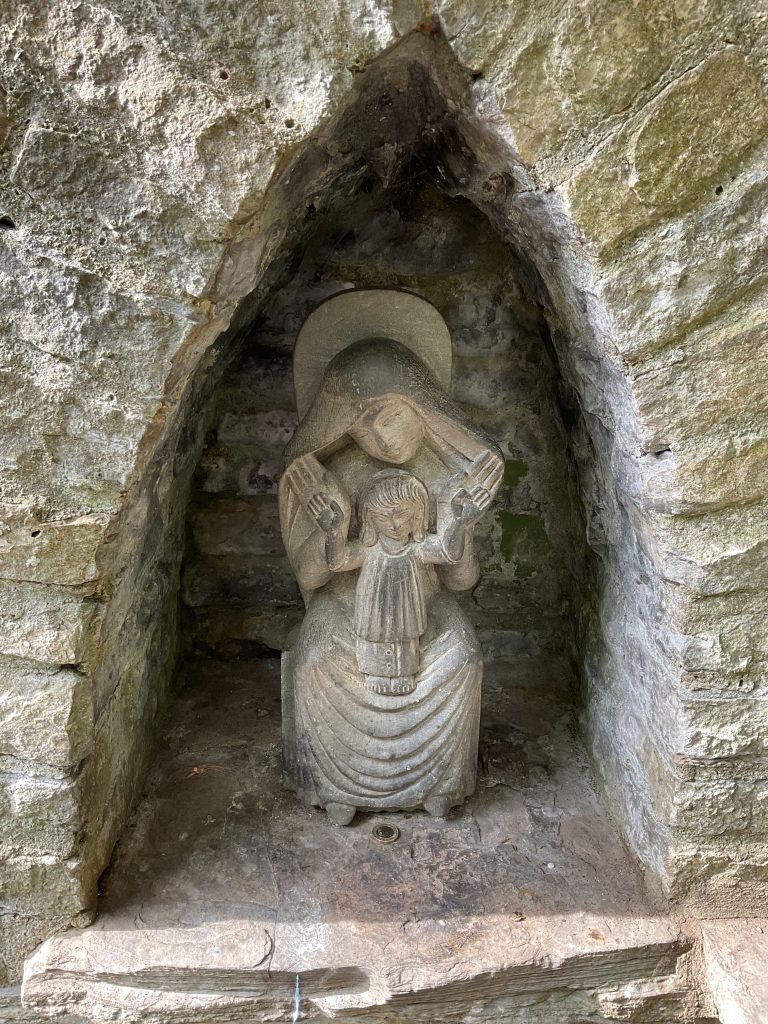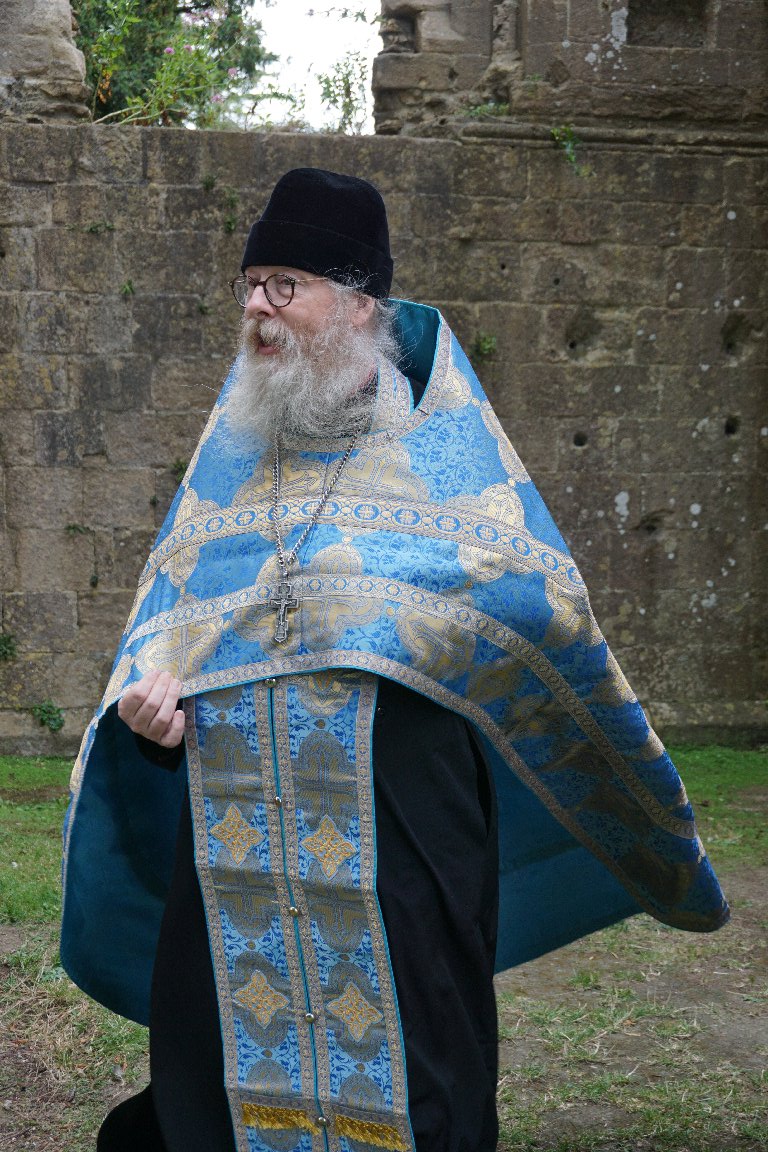
Dear brothers and sisters: Christ is Risen!
This Saturday – 20th May – will see a band of pilgrims head to Glastonbury, meeting at Bride’s Mount in Beckery, on the edge of the town, at 10:00, celebrating a moleben to St Brigid.
Before the drainage of the Somerset Levels, Beckery – this area on the edge of Glastonbury – was an island in the tidal marshes along the River Brue, and Bride’s Mound was crowned with a monastic house. This monastic dwelling, dedicated to St Mary Magdalene, was associated with Irish monastics travelling to Glastonbury – the primary monastery of ancient Britain – and Glastonbury lore and tradition, lists St Brigid as one of the Irish saints who visited and stayed here.

After the moleben at Bride’s Mound, we will head into town to the abbey, with the ruins of the once great religious foundation in its green acres of gardens. This will be an excellent place to refresh ourselves physically as well as spiritually, and the visitors’ centre has excellent educational resources.
The abbey grounds once contained the women’s alms-houses that were associated with St Patrick’s Chapel, and St Margaret’s Hospital with its men’s alms-houses nearby in Magdalen St, is another place for pilgrims to visit.

Our parish’s seasoned Glastonbury pilgrims enjoy visiting the Rose Garden – a wonderful little shop next to the parish church – from which we usually emerge with books, icons and Orthodox supplies.
As we head towards Chalice Well and the Tor, we can visit the fine neighbouring medieval church, which has been decluttered and restored over the last few years, so that we can now appreciate the beauty of the building, without the Victorian clutter that once made it difficult to see.
Chalice Well is very much a product of romance and legend, with its very creative association between St Joseph of Arimathea and the medieval well from which the iron-rich waters flow. Regardless of the new-age and alternative activities that happen within its environs, it remains a place of peace, relaxation, beauty and tranquillity – with a spring with beneficial waters.
Chalice Hill, from which the well flows is nestled next to Glastonbury Tor, the dramatic conical hill on which an ancient monastery stood – in whose excavation Fr Luke was involved in its excavation in the late 1960’s. In the middle-ages, the church of St Michael was built, with its surviving tower crowning the Tor.

The rural-life museum in the abbey barn is close by, and pilgrims may also wish to make a visit.
We look forward to our day in Avalon!
Looking forward to June, we shall be making a pilgrimage to Pennant Melangell on June 10th (the day after the feast of St Melangell). Given its distance from Cardiff, several parishioners having arranged to camp nearby. On the night of Friday June 9th.
The church in Pennant Melangell is built on the ancient site of the ancient monastery over which St Melangell presided as abbess, and houses her relics in the shrine where we will celebrate our pilgrim Liturgy.

This will be a very special pilgrimage, given the shrine and relics of St Melangell at the heart of the church, and we look forward to it.
Any potential pilgrims should contact Tracy: t_sbrain@icloud.com
From July 24-27th, group of ROCOR parishioners will be travelling to Walsingham, ‘England’s Nazareth’, enjoying the hospitality of the South Wales Anglican Pilgrimage, after Fr Dean’s invitation to join the pilgrimage once more.
The accommodation cost is £225, and the cost for those wishing to travel on the coach is £370. Any more interested parties should contact me, Norman or Georgina as soon as possible
On a non-pilgrimage note, please remember that our Ascension Day Liturgy will be celebrated in Nazareth House at 11:00 on Thursday May 25th.
In Christ – Fr Mark

